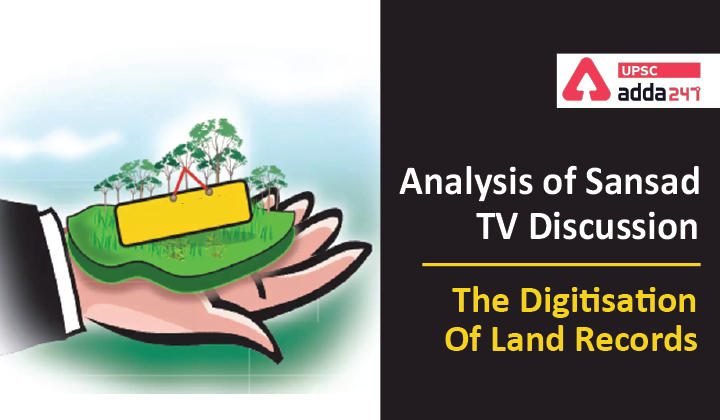Table of Contents
Introduction
The Digital India Land Records Modernization Programme (DILRMP) has been conceptualized as a major system and reform initiative that is concerned not merely with computerization, updating and maintenance of land records and validation of titles, but also as a programme that will add value and provide a comprehensive database for planning developmental, regulatory and disaster management activities by providing location-specific information while providing citizen services based on land records data.
Background
The programme has been brought under ‘Digital India’, the flagship programme of the Government of India and has been converted into a Central Plan w.e.f. 01.04.2016. The Programme has since been re-designated as the ‘Digital India Land Records Modernization Programme’.
What is Digital India Land Records Modernization Programme (DILRMP)?
- The Digital India Land Records Modernization Programme (DILRMP) is a Central Sector scheme.
- It attempts to build upon the commonalities that exist in the arena of land records in various States to develop an appropriate Integrated Land Information Management System (ILIMS) across the country, on which different States can also add State-specific needs as they may deem relevant and appropriate.
What is the Aim of the Digital India Land Records Modernization Programme (DILRMP)?
- To ensure sustainable development of rainfed cultivable and degraded lands through a participatory approach by involving the stakeholders in decision making in the watershed development programmes.
- To enhance the productivity of wastelands thereby enhancing livelihood opportunities in rural areas.
- To put in place effective agrarian reforms, including an efficient land use policy, and a transparent Land Records Management System (LRMS) with the aim of building an Integrated Land Information Management System (ILIMS).
- This system of integrated land information management will ultimately yield the security of tenancy to citizens, reduce land disputes, simplify the procedure for transfer of properties title, fraudulent free landed properties transactions, etc.
What is Digital India Programme?
- Digital India is a flagship programme of the Government of India with a vision to transform India into a digitally empowered society and knowledge economy.
- The programme was launched on July 1, 2015
Progress Made Under the Digital India Land Record Modernization Programme
Substantial progress has been achieved under the Digital India Land Record Modernization Programme (DILRMP) since its inception. The details of the same are as under:
- Computerization of Land Records has been completed (more than 90%) in 23 States/ UTs and substantial progress has been achieved in 11 States/ UTs.
- Digitization of Cadastral Maps has been completed (more than 90%) in 19 States/ UTs and substantial progress has been achieved in 9 States/ UTs.
- Computerization of Registration (SRO) has been completed (more than 90%) in 22 States/ UTs and substantial progress has been achieved in 8 States/ UTs.
- Integration of SRO with Revenue Office has been completed (more than 90%) in 16 States/ UTs and substantial progress has been achieved in 8 States/ UTs.
Why it is important to Digitize Land Recorders?
- Access to land is a critical factor for economic growth and poverty reduction. For government, industry, and citizens to be able to use this asset effectively and to minimize land conflicts, it is important to have access to reliable land and property records.
- Digitizing these land records is critical for ensuring economic growth, as accessible, high-quality records not only help increase the visibility and availability of land for large-scale investment opportunities but at an individual level, also makes it possible for the public to transact land and use it for seeking credit in a dispute-free environment.



 TSPSC Group 1 Question Paper 2024, Downl...
TSPSC Group 1 Question Paper 2024, Downl...
 TSPSC Group 1 Answer key 2024 Out, Downl...
TSPSC Group 1 Answer key 2024 Out, Downl...
 UPSC Prelims 2024 Question Paper, Downlo...
UPSC Prelims 2024 Question Paper, Downlo...




